In the chronicles of the many badass ladies who have launched epic solo adventures, there is one heroine who stands apart in my mind for her sheer tenacity and daring.
When Audrey Sutherland started her explorations in 1962, she wanted to explore the coast of Hawaiian island, Moloka’i. Lacking any gear and without the funds to rent a boat, she did it by swimming in jeans, towing behind her camping gear wrapped in a shower curtain and stuffed into an army bag. It was the first of countless solo adventures.
Gradually—thankfully—she refined her mode of transport to an inflatable in which she traveled alone for thousands of miles through the Hawaiian islands and then in Alaska and British Columbia. She spent every summer between 1980 and 2003 exploring over 8,075 miles of islets and waterways of the Pacific Northwest.
In July, Patagonia Press released commemorative editions of two of her books, Paddling My Own Canoe and Paddling North. The paperbacks follow two of her 20 trips through rugged wilderness, trips she started at age 60 after raising four kids as a single mom. Sutherland’s books are quintessential guides, humorous recollections and sage perspective gained from racking up some 12,000 nautical miles alone on remote seas.
For Sutherland, it was always the same philosophy. Go simple, go solo, go now. “The only real security is not insurance or money or a job, not a house and furniture paid for, or a retirement fund, and never is it another person. It is the skill and humor and courage within, the ability to build your own fires and find your own peace,” she wrote. Audrey Sutherland died peacefully in 2015 at the age of 94.
Announce a solo trip and naysayers soon chime in with the “what if’s” and urban legends starring poor saps alone in the woods with only psychopaths, bears and banjos for company.
As Sutherland knew better than anyone, when solo it’s inevitable you’ll discover just how capable you are. Or aren’t, as the case may be. In an increasingly risk-adverse world, her mindset is rare.
Solo travel like Sutherland’s not only pushes the paddler outside of her own comfort zone. It chafes against the expectations of others, defying conventions of convenience and safety, and in Sutherland’s case, of age and gender.
Any solo tripper has likely experienced some version of this. Announce a solo trip and naysayers soon chime in with the “what if’s” and urban legends starring poor saps alone in the woods with only psychopaths, bears and banjos for company.
In the article “Risk Management Is Sucking The Life From Kids’ Paddling Trips” professor Bob Henderson and Ryan Howard discuss the relative risks of backcountry adventures, which by every metric are small in comparison to our everyday activities. Despite the facts, the unknown wilderness is often perceived as threatening by those who don’t venture farther into the woods than the cottage doorstep.
Undoubtedly, going solo increases risk—without a trip mate, who will activate an EPIRP or act as a first responder in the unlikely event of an accident or medical crisis? Just how much risk increases is hard to measure, however, factoring in specific environmental hazards with skill and good judgement.
Nothing is ever perfectly safe, and our aim shouldn’t be to try and make it so. As Henderson notes, trips should be as safe as necessary, but we can’t consume ourselves with trying to make them as safe as possible. There is risk as inherent in the outdoors as in getting out of bed in the morning.
For Sutherland, it seems like going solo was never in question. Who else had the time and desire to spend three months paddling the coast of Alaska?
Alone, you are more aware of your surroundings. To have actual survival, living or dying, depend on our ingenuity, skill, or stamina—this is a core question we seldom face,” writes Sutherland at the end of her journey in Paddling My Own Canoe. “The confidence and strength remain and are brought back and applied to the rest of life. I can return to the lonely splendor—and I am no longer afraid.
Far more dangerous than going solo is not going at all.
Last year, editor Kaydi Pyette spent six months on a solo adventure, pedalling her bicycle through Southeast and East Asia, wild camping much of the way. Feature Photo: Mike Last



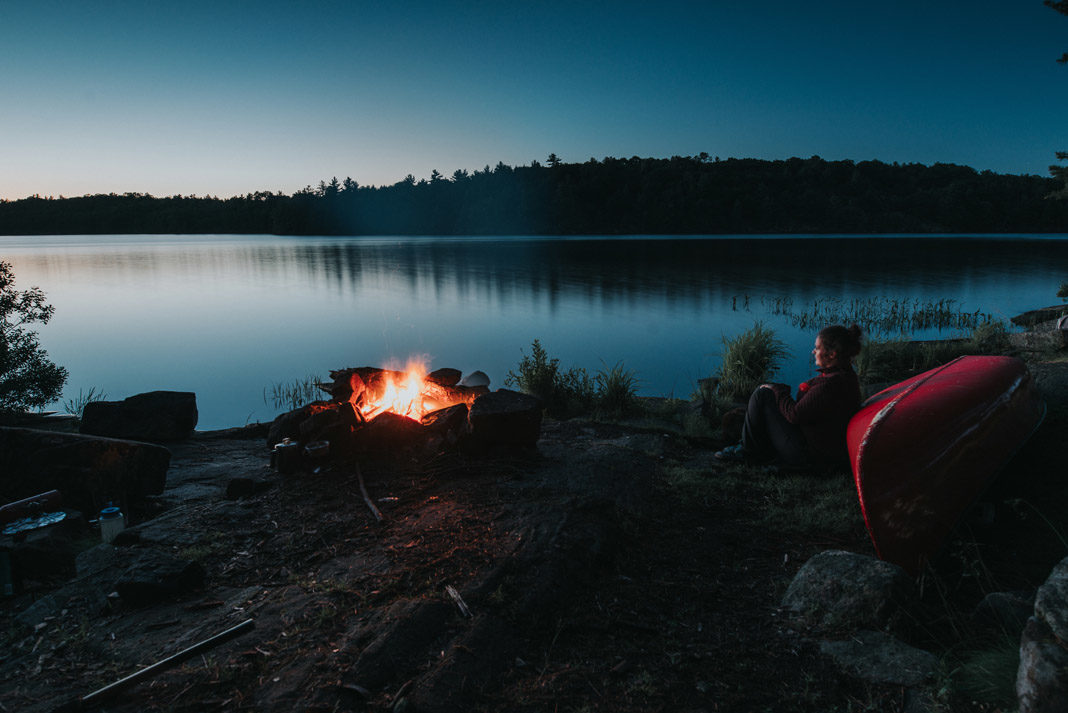
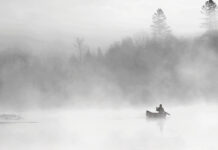
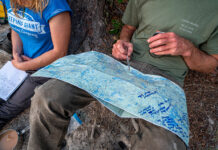
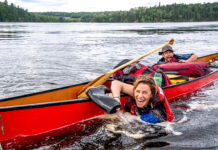
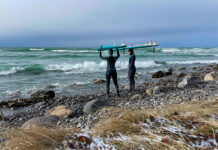
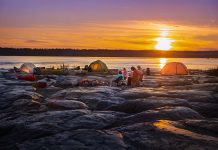

Great article! In September 2016! I shattered my heel and the 4 surgeries it took to put me “kinda” together required 6 months of care and relying on others. I wondered if Zi could ever do the adventures I was used to doing. The following May, I put my OT Pack canoe on the Subaru and headed out alone to paddle and camp in the area East of Lake Nipigon, Ontario just after ice out.
I had talked with a few people and done some reading, but it was my first visit to this area. Even though I was still using a cane and moving slow, I needed to a dose of self reliance in the wilderness again. This trip proved to be the best medicine for my spirit.
The most dangerous thing objectively? Driving to the put-in, and back home again.
It was Susan Conrad (Inside: One Woman’s Journey Through the Inside Passage) who told me about Audrey. I read both books and was astounded. And she paddled in a Sevylor Tahiti – probably the cheapest kayak ever made. Astounding.